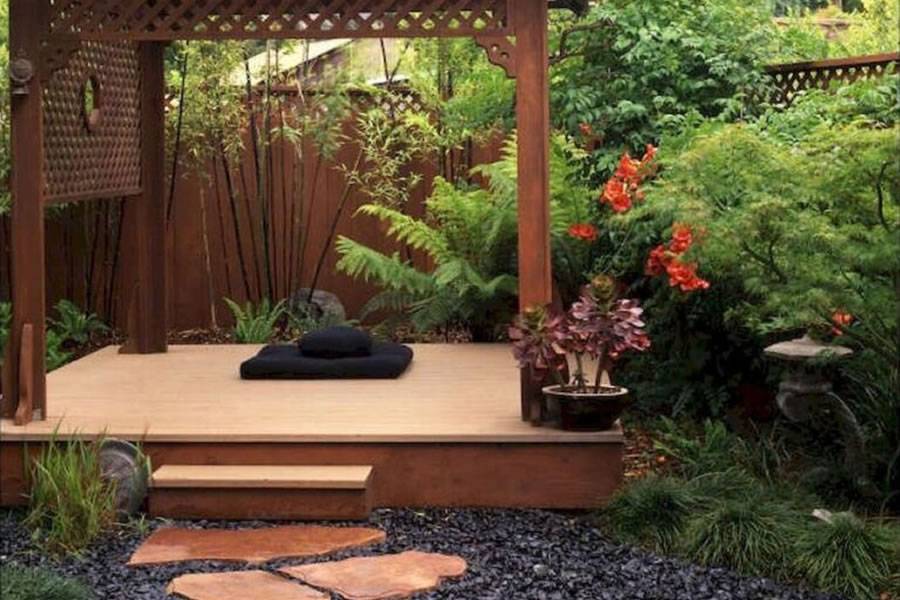Creating a Tranquil Meditation Space in Your Garden: A Step-by-Step Guide
- 29-03-2024
- Business
- collaborative post
In today's fast-paced world, finding moments of peace and tranquillity is essential for our mental well-being. One way to achieve this is through meditation, and what better place to meditate than in the serene ambience of your own garden? Creating a dedicated meditation space amidst nature can enhance your practice and provide a sanctuary for relaxation and self-reflection.
Here's a step-by-step guide to help you create your own meditation haven right in your backyard - it’s also the perfect place to be mindful - learn more about Mindfulness Meditation.
Step 1: Choose the Perfect Spot
Selecting the right location for your meditation space is crucial. Look for a quiet area in your garden that offers privacy and minimal distractions. Consider factors such as sunlight, shade, and proximity to natural elements like trees or flowers. Ideally, choose a spot that receives gentle morning sunlight and is shielded from strong winds.
Step 2: Clear the Area
Before you begin designing your meditation space, clear the chosen area of any debris, weeds, or clutter. You may need to further clear the garden space by using a leaf blower. Direct the airflow to gather leaves, debris, and small twigs into a manageable pile for easy disposal. This process not only prepares the ground but also allows you to visualise the layout of your meditation space more effectively. Trim overhanging branches or bushes to create an open and inviting atmosphere.
Step 3: Define the Space
Outline the boundaries of your meditation area using stones, wooden borders, or decorative fencing, some people go as far as to build a garden space for meditation. This demarcation serves to designate the space and gives it a sense of purpose. You can create a circular or rectangular boundary depending on your preference and available space.
Step 4: Choose Comfortable Seating
Select seating options that promote comfort and relaxation during meditation. This could range from a simple cushion or meditation mat placed directly on the ground to a comfortable bench or chair. Consider adding cushions or pillows for extra support and to enhance the aesthetic appeal of your meditation space.
Step 5: Add Natural Elements
Integrate natural elements such as plants, flowers, or water features into your meditation space to create a calming environment. Surrounding yourself with greenery not only enhances the beauty of the space but also fosters a deeper connection with nature. Choose plants known for their calming properties, such as lavender, jasmine, or peace lilies, to further promote relaxation.
Step 6: Incorporate Personal Touches
Make your meditation space unique to you by adding personal touches and meaningful decorations. Hang wind chimes or Tibetan prayer flags for a soothing soundtrack, place a small altar or statue symbolising peace and serenity, or incorporate decorative stones or crystals for spiritual energy.
Step 7: Enhance with Ambient Lighting
Consider incorporating ambient lighting into your meditation space to create a tranquil atmosphere, especially for evening or early morning meditation sessions. Opt for soft, diffused lighting sources such as string lights, lanterns, or candles to evoke a sense of warmth and serenity.
Step 8: Maintain Regularly
To ensure your meditation space remains inviting and conducive to practice, maintain it regularly. This includes watering plants, removing weeds, cleaning seating areas, and refreshing decorations as needed. Regular maintenance not only preserves the beauty of your meditation space but also reinforces your commitment to self-care and mindfulness.
Conclusion:
Creating a meditation space in your garden offers a sanctuary for quiet reflection and inner peace amidst the beauty of nature. By following these simple steps and infusing your personal style and preferences, you can design a tranquil oasis that nurtures your mind, body, and spirit. Take the time to cultivate this sacred space, and watch as it becomes a cherished retreat for your meditation practice and overall well-being.


























































